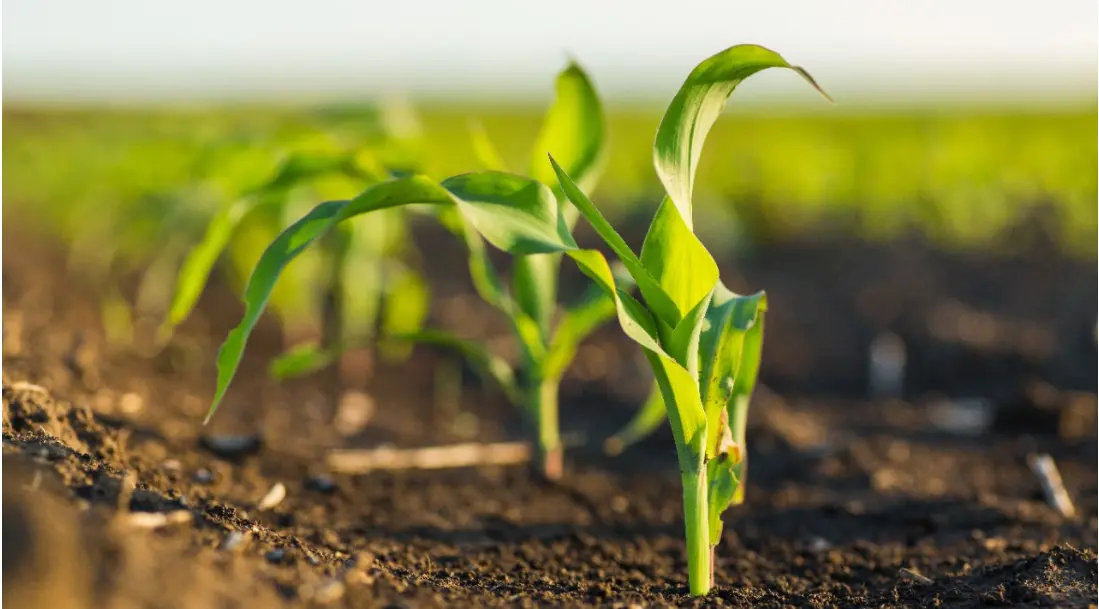Organic farming is an environmentally friendly and sustainable way of producing fresh, healthy, and chemical-free food. With the rising demand for organic produce, many people are now considering starting organic farming at home. Here is a step-by-step guide on how to start organic farming at home.
Choose a Location
The first step is to select an appropriate location for your organic farm. Choose a place that has access to sunlight, water, and good drainage. You can also use containers, pots, or raised beds to grow plants if you don’t have a large outdoor space.
When choosing a location for your organic farm, there are several factors to consider. Here are some tips to help you choose the right location:
- Sunlight: Most plants require at least 6 hours of sunlight per day, so choose a location that receives adequate sunlight. Observe the area throughout the day to determine the amount of sunlight it receives.
- Water: Your farm should be located near a reliable water source, such as a well or a municipal water supply. The location should also have good drainage to prevent waterlogging.
- Soil: The soil should be fertile, well-drained, and free of contaminants. You can have the soil tested to determine its nutrient content and pH level.
- Accessibility: The location should be easily accessible so that you can transport supplies and harvest your crops easily. It should also be safe and secure.
- Size: Choose a location that provides enough space for your crops and allows room for expansion if necessary.
- Local zoning laws: Check with your local government to ensure that you comply with zoning laws and regulations.
Overall, choose a location that provides optimal growing conditions for your crops and fits your specific needs and goals for your organic farm.
Plan Your Garden
Once you have decided on the location, it’s time to plan your garden. Decide what crops you want to grow and create a layout for your garden. Consider the amount of space you have, the plants’ sunlight requirements, and their water needs.
Planning your garden is an important step in starting your organic farm. Here are some tips to help you plan your garden:
- Choose your crops: Determine which crops you want to grow. Consider the growing season, the amount of space you have, and the needs of each plant.
- Layout: Sketch out a plan of your garden layout, including the placement of each crop, and ensure that the design maximizes sunlight and water availability. Consider the size and spacing of each crop, as well as their soil and water needs.
- Companion planting: Consider companion planting, which involves planting different crops together that benefit each other, such as planting tomatoes with basil or planting beans with corn.
- Crop rotation: Plan for crop rotation, which involves planting different crops in different areas of the garden each year to prevent soil depletion and disease buildup.
- Consider soil fertility: Plan to add compost or other organic matter to the soil to improve its fertility and maintain healthy soil.
- Plan for irrigation: Determine how you will irrigate your garden, whether it’s through a drip system or manual watering.
- Budget: Consider your budget for seeds, tools, and other gardening supplies when planning your garden.
Overall, a well-planned garden will help you maximize your yield and minimize problems such as pests and disease.
Prepare the Soil
The soil is the foundation of your organic farm, and it’s essential to prepare it correctly. Remove any weeds, rocks, or debris and add organic matter such as compost, manure, or leaves to enrich the soil. You can also use organic fertilizers and natural pest control methods to maintain healthy soil.
Preparing the soil is a critical step in starting an organic farm. Here are some tips to help you prepare your soil:
- Remove debris: Clear the area of any rocks, weeds, or debris that could hinder plant growth.
- Test the soil: Test the soil to determine its nutrient content and pH level. Soil testing kits can be purchased from garden centers or online.
- Amend the soil: Add organic matter such as compost, manure, or leaves to enrich the soil. Organic matter helps to improve soil structure, water-holding capacity, and nutrient content.
- Till the soil: Use a tiller or a garden fork to loosen the soil to a depth of 6-8 inches. This will help to improve soil aeration and drainage.
- Apply organic fertilizers: Use organic fertilizers such as bone meal, fish emulsion, or blood meal to add nutrients to the soil. Organic fertilizers are slow-release, which means they provide nutrients to the plants over time.
- Mulch the soil: Cover the soil with a layer of organic mulch, such as straw or shredded leaves, to help retain moisture and suppress weed growth.
Overall, healthy soil is the foundation of organic farming. By preparing your soil properly, you can provide your plants with the nutrients and growing conditions they need to thrive.
Choose Organic Seeds
Choosing organic seeds is crucial for organic farming. Look for seeds that are certified organic and non-GMO. You can purchase them from local nurseries, online stores, or seed catalogs.
Choosing organic seeds is an important part of starting an organic farm. Here are some tips to help you choose the right organic seeds for your farm:
- Look for certified organic seeds: Choose seeds that have been certified organic by a recognized organization. Organic seeds are produced without the use of synthetic fertilizers, pesticides, or genetically modified organisms (GMOs).
- Choose the right varieties: Look for seed varieties that are well-suited to your growing conditions, such as your climate, soil type, and the amount of sunlight your garden receives. Different varieties of the same crop may have different characteristics such as disease resistance, flavor, or growth habits.
- Consider heirloom seeds: Heirloom seeds are open-pollinated and have been passed down through generations. They are often more flavorful and have unique characteristics compared to hybrid varieties.
- Buy from a reputable supplier: Purchase seeds from a reputable supplier who specializes in organic seeds. Ask for recommendations from other organic farmers or check online reviews.
- Choose non-GMO seeds: Look for seeds that are labeled as non-GMO. This ensures that the seeds have not been genetically modified or engineered.
- Save your own seeds: Consider saving seeds from your own plants for the following season. This can be a cost-effective way to grow your farm and also helps to preserve seed diversity.
Overall, choosing organic seeds is an important step in ensuring that your farm is truly organic. By selecting the right seeds, you can help to ensure the health and productivity of your crops while preserving genetic diversity.
Plant Your Garden
It’s time to plant your organic garden. Follow the instructions on the seed packets, and plant the seeds at the right depth and spacing. Water the seeds and seedlings regularly and provide them with adequate sunlight.
Planting your garden is an exciting step in starting your organic farm. Here are some tips to help you plant your garden:
- Follow your garden layout plan: Use your garden layout plan to guide you in planting your crops. Make sure to follow the recommended spacing for each crop to ensure optimal growth.
- Plant at the right time: Plant each crop at the appropriate time for your growing zone. Consult a planting calendar or ask a local gardening expert for advice.
- Handle seedlings with care: If planting seedlings, be gentle when handling them to avoid damaging the roots. Transplant them into the soil at the same depth they were in their original container.
- Water the plants: Water your plants immediately after planting to help them settle into the soil. Provide regular watering as needed based on the needs of each crop.
- Use natural pest control: Use natural methods for pest control, such as companion planting or using organic pest control products.
- Monitor growth: Keep an eye on the growth of your plants and adjust watering, fertilization, or pest control as needed.
- Consider intercropping: Consider intercropping, which involves planting multiple crops in the same area to maximize productivity and use of space.
Overall, planting your garden requires careful attention to detail, but it is also a rewarding experience. By following these tips, you can help your plants grow and produce healthy, delicious organic produce.
Maintain Your Garden
Maintaining your organic garden involves regular watering, fertilizing, and weeding. You can use organic fertilizers such as compost tea, fish emulsion, or bone meal. You can also use natural pest control methods such as companion planting, crop rotation, and handpicking pests.
Maintaining your garden is key to ensuring a healthy and productive organic farm. Here are some tips to help you maintain your garden:
- Water your plants: Provide your plants with regular watering to ensure they receive enough moisture. Make sure to water them deeply at the base of the plant, rather than just on the surface.
- Fertilize the soil: Use organic fertilizers such as compost, manure, or bone meal to provide your plants with the nutrients they need. Apply fertilizers sparingly and follow the instructions carefully to avoid over-fertilizing.
- Weed regularly: Remove weeds from your garden regularly to prevent them from competing with your plants for nutrients and sunlight.
- Prune and train your plants: Prune and train your plants as needed to encourage healthy growth and prevent disease. Remove dead or damaged leaves and branches, and support tall plants with stakes or trellises.
- Control pests and diseases: Use natural methods for pest and disease control, such as companion planting, crop rotation, and using organic pest control products.
- Harvest regularly: Harvest your crops regularly to encourage continued production and prevent over-ripening or spoilage.
- Maintain garden hygiene: Keep your garden clean and well-maintained to prevent the spread of disease. Remove any plant debris, and disinfect your tools after each use.
By following these tips, you can maintain a healthy and productive organic garden. Remember that organic farming is a continuous process that requires regular care and attention. With patience and dedication, your organic farm can thrive and provide you with delicious, nutritious produce.
Harvest Your Crops
Once your crops are mature, it’s time to harvest them. Harvest the crops at the right time and store them properly. You can also preserve them by canning, freezing, or dehydrating.
Harvesting your crops is one of the most rewarding aspects of organic farming. Here are some tips to help you harvest your crops:
- Harvest at the right time: Harvest your crops when they are fully ripe and ready to be picked. Consult a harvesting guide or ask a local gardening expert for advice on when to harvest each crop.
- Use the right tools: Use the appropriate tools for harvesting each crop, such as pruning shears for herbs or scissors for lettuce. Make sure to keep your tools clean and sharp.
- Handle crops gently: Be gentle when harvesting your crops to avoid damaging them. Handle them carefully and place them in a basket or container to avoid bruising.
- Store crops properly: Store your harvested crops in a cool, dry place to help them last longer. Use containers or bags that allow for air circulation to prevent moisture buildup.
- Preserve excess crops: If you have more produce than you can use, consider preserving it by canning, freezing, or drying it.
- Save seeds for next season: Save seeds from your plants for the following season. This can be a cost-effective way to grow your farm and also helps to preserve seed diversity.
Harvesting your crops is a time to celebrate the hard work and dedication you have put into your organic farm. By following these tips, you can ensure that your harvested crops are fresh, delicious, and nutritious.
FAQ
A: Organic farming is a method of agriculture that involves growing crops without the use of synthetic fertilizers, pesticides, or genetically modified organisms (GMOs). Instead, organic farmers rely on natural methods such as crop rotation, composting, and biological pest control to maintain soil fertility and prevent pests and diseases.
A: Organic farming is important because it promotes sustainable agriculture practices that minimize harm to the environment, wildlife, and human health. Organic farming also supports local and regional food systems, reduces reliance on fossil fuels, and helps to preserve biodiversity.
A: Yes, you can start organic farming at home. Even if you have limited space, you can still grow vegetables, herbs, and fruits in containers or raised beds. With the right planning and preparation, you can create a productive and sustainable organic farm right in your own backyard.
A: You do not need special equipment to start organic farming. Basic tools such as a shovel, rake, and hoe are sufficient for preparing the soil and planting your crops. Depending on the size of your farm, you may also need a watering can, a wheelbarrow, and gardening gloves.
A: Yes, compost is an excellent source of organic fertilizer for your crops. Compost is made from organic materials such as vegetable scraps, yard waste, and livestock manure, which decompose over time to create a nutrient-rich soil amendment. Using compost in your organic farm can help to improve soil fertility and promote healthy plant growth.
Starting an organic farm at home is a fulfilling and rewarding experience. With proper planning, preparation, and care, you can grow fresh and healthy produce for your family and contribute to a more sustainable food system.
Organic farming is a rewarding and sustainable way to grow your own food and contribute to a healthier environment. Starting an organic farm at home requires careful planning, preparation, and maintenance, but with dedication and patience, it can be a fulfilling and worthwhile endeavor. By following the steps outlined in this guide, you can create a productive and sustainable organic farm that provides you with fresh, nutritious produce and supports a more sustainable food system. Remember to always use natural methods for pest and disease control, and to choose organic seeds and fertilizers to maintain the integrity of your farm. With these practices in mind, you can enjoy the benefits of organic farming and help to promote a more sustainable future for our planet.





